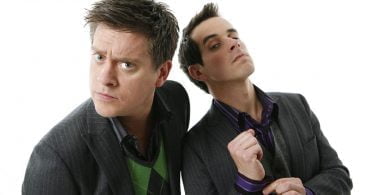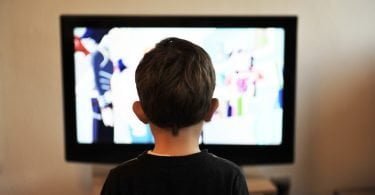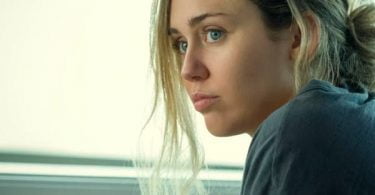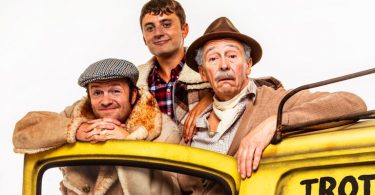WARNING: IF YOU DO NOT WANT THIS LARGELY EXCELLENT SHOW SPOILED FOR YOU, AVOID READING THIS ARTICLE AT ALL COSTS.
WARNING: IF YOU DO NOT WANT THIS LARGELY EXCELLENT SHOW SPOILED FOR YOU, AVOID READING THIS ARTICLE AT ALL COSTS.
If you are not familiar with the universe, you probably won’t have a clue what I’m talking about anyway. I am going to assume knowledge of the characters because describing them will take forever.
TV has for the last decade been a bubbling cauldron of invention, freedom and progression. Thanks to the likes of AMC, HBO and Showtime, budgets are increasing to an almost cinematic level, bigger stars are entering the fold from outside (and being born inside) and directors are wrenching themselves from the manacles of Hollywood dictatorship and capitalising on a medium that allows dense, rich character development and intricately woven stories that last for tens of hours.
Amongst the most popular of this (relatively) recent deluge of quality is Game of Thrones, a pseudo-medieval fantasy epic set amongst conflicts in the fictional continent of Westeros and based on the award-winning fantasy novels A Song of Ice and Fire by George R. R. Martin. Now being televised internationally, it has become the most pirated show in history, and remains pasted over billboards up and down the country.
The show is picking up a reputation not only for its dense plotting and, shall we say, colourful dialogue, but also for its extreme depictions of combat and violence, alongside a preoccupation with showing its female roster of characters in varying states of undress. Neither of which I’m going to complain about—the show has its foundations in a hyper-masculine web of honour, betrayal and power. Breasts are simply a somewhat pleasing by-product. It very much uses this testosterone to its advantage, like a judo master uses an assailants own weight against them.
However, more alarming are the show’s very dark forays into the sexual recesses of those vying for power, including some pretty pungent scenes of sexual violence that do not sit well with many female fans of the books – and there are many. The books are often praised for their strong female protagonists.
 At face value, women are seen as inferior by the many patriarchs in the show, often referred to as ‘whore’ or ‘wench’, and are very often the targets of tactical kidnaps disguised as power marriages. Poor Sansa Stark, by this point in the show, is being thrown from marriage to marriage like a regal ragdoll by powers she simply does not understand. Arranged betrothals are the norm in Westeros, and the women rarely benefit from them. Rape is casually bandied about as a part of war and we are invited to sympathise with characters like Khal Drogo, whose Dothraki tribe of savages successfully rape and pillage every village they encounter, because it is ‘their way.’
At face value, women are seen as inferior by the many patriarchs in the show, often referred to as ‘whore’ or ‘wench’, and are very often the targets of tactical kidnaps disguised as power marriages. Poor Sansa Stark, by this point in the show, is being thrown from marriage to marriage like a regal ragdoll by powers she simply does not understand. Arranged betrothals are the norm in Westeros, and the women rarely benefit from them. Rape is casually bandied about as a part of war and we are invited to sympathise with characters like Khal Drogo, whose Dothraki tribe of savages successfully rape and pillage every village they encounter, because it is ‘their way.’
Many of the characters in the show were ‘aged up’ simply so Daenerys, aged thirteen in the books, could be seen topless, having her breasts fondled by her brother, in her introductory scene in the show.
Acts of sexual aggression are perpetrated by disturbingly young characters like the repulsive King Joffrey, armed with a crossbow and a complete disregard for human suffering. Eunuchs and victims of sexual violence (often graphically described—Varys’ description of his castration experience with a sorcerer is absolutely harrowing) are perceived as a great threat: one unfortunate member of a brutal slave army of Eunuchs has his nipple sliced off without flinching.
Characters like the ‘head wench’ Ros are in the show to suffer, put on a brave face and meet a horrendous end, and are not even sourced in the original material. That said, the books themselves have a heavy reliance on sensual descriptions of excess—sex, violence, scenery and even food are described in pornographic detail. Martin draws a thin, wavy line between brutal realism and sado-erotic titillation.
With the amount of bouncing cleavage on display, it’s easy to forget that the show is not simply a relentless display of sexual violence against women. Game of Thrones primary concern as a literary work and its adaptation is as an exploration of wartime relationships, with dragons, zombies and dark priests thrown in for good measure. To dub some of the more controversial acts in the show as ‘sexual violence’ is incredibly reductionist. The show (and the books) perpetuate sex AS violence: romance as a forging and breaking of alliances, the effects and diegetic justifications for incest, men going to war over murdered women: psychological, emotional and excruciating physical trauma are several of the mainstays of the show and sex is the diabolical network that ties them together.
The lines blur as the characters evolve/devolve and events spiral out of control. Unfortunately, the violence in the show sticks out a lot more as the books are far denser and character motives and purposes are made abundantly clearer through internal monologues and italicised asides. To properly have it in context, I urge you read the books—it makes the violence more powerful, more brutal and yet more palatable all at once. Even though it’s visually striking, this is one of the areas in which the show falls short of the expectations established by the books.
 It’s not just women that get ‘stuck with the pointy end’ as Arya Stark, one of the most endearing female protagonists in recent years, adeptly puts it. The myriad of female characters are portrayed as strong survivors (no mother should endure what Catelyn Stark has to), liberators (Daenaerys become more honorable and more fearsome with every passing season), rebels (the aforementioned Arya and fiery Boudica-esque Wildling Ygritte) and convincing villains (Cersei is the picture of restrained malice in her Lady Macbeth role as Queen Regent).
It’s not just women that get ‘stuck with the pointy end’ as Arya Stark, one of the most endearing female protagonists in recent years, adeptly puts it. The myriad of female characters are portrayed as strong survivors (no mother should endure what Catelyn Stark has to), liberators (Daenaerys become more honorable and more fearsome with every passing season), rebels (the aforementioned Arya and fiery Boudica-esque Wildling Ygritte) and convincing villains (Cersei is the picture of restrained malice in her Lady Macbeth role as Queen Regent).
Men like Theon Greyjoy and Jaime Lannister are castrated, maimed and tortured just as much as females. Westeros is a patchwork of different historical places and periods—the viking Greyjoys, Stannis and his stubborn crusades, Henry VIII disguised as King Robert Baratheon, Daenaerys walking into the flames after the prototype of Joan of Arc—they are a constant symbol of the unfortunate and tragic realities of war that come with them.
Following from this, the rules of probability in the Game of Thrones universe dictate that no character is safe from any treatment, no matter how major or minor. Any level of cruelty can be inflicted on any party at any time. If the inhabitants of Westeros are sometimes discarded as objects, it’s because they are objects: the events of the books depict the last gasp of a human realm against forces larger and more powerful than they are, however often they ruminate on what constitutes real ‘power.’
The characters in the show and books alike are willing to clamber over each other and submit to all levels of nastiness in order to have a nose poking out of the shit-heap. It’s escapism through sheer force. Every character that suffers may not always meet a happy ending, and each endures AWFUL things, but almost always gets a form of retribution, retaliation or a way out- normally to be met with disappointment or betrayal again. It sometimes takes a few books to come full circle, but somewhere in the dense web of malice being spun by the characters, at any point, there’s a fly eating a spider somewhere in the Game of Thrones universe.
Fantasy fiction and sci-fi like the obvious Lord of the Rings and The Chronicles of Narnia run the risk of becoming highly gentrified: softened and popularised and negating what they have in mythology with a blunt blade. Even though the LOTR films contained some graphic moments and genuinely terrifying scenes, the language and chain of events create a world so removed from our own that they can hardly be related to, engrossing as they are. By the end of A Storm of Swords, the third Game of Thrones book, the death toll of named Characters and key players is 223, not mentioned the tens of thousands that die in battle.
Fantasy is escapism, and it’s very rare that you come out of a piece of fiction truly happy to return to your mediocre every day to-ings and fro-ings. Game of Thrones embraces a level of bleakness and goes to places that are so terrible you emerge feeling lucky to be alive. It induces a kind of negative vitality that I haven’t experienced before: more so with the book than the series.
The series is a rich, dense piece of entertainment, but that is all, and some of the sexual violence steps dangerously close to the mark, even though it is never glorified and the sole domain of the truly evil characters. Reading the books gives a context and depth to the terrible acts being perpetrated, and anyone disturbed by the series should consider immersing themselves in the mythology a little further. None of it is for the faint-hearted, and as viewers/readers with two more (as yet non-existent) books to slaver over we will never truly understand the end game until it is in place. It is never possible to condone sexual violence as entertainment, but the show is at a stage where these acts have not yet come to be punished, and appear glorified. Maybe it’s exploitative.
Maybe it’s incisive. I feel that it’s an intriguing mixture of both, and the fact these questions arise at all is a testament to the power of both A Song of Ice and Fire and Game of Thrones.
What do you think about Game of Thrones? Does it cross the line when it comes to sexual violence? Have your say in the comments section below, on Facebook or on Twitter.








